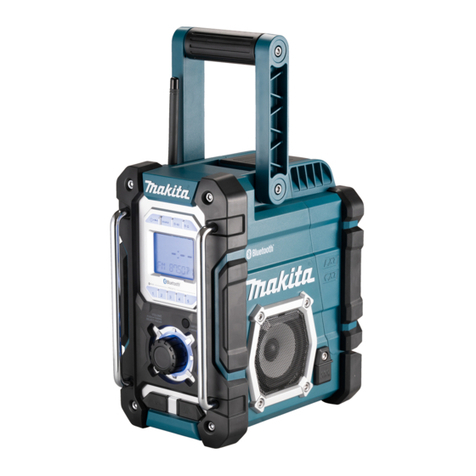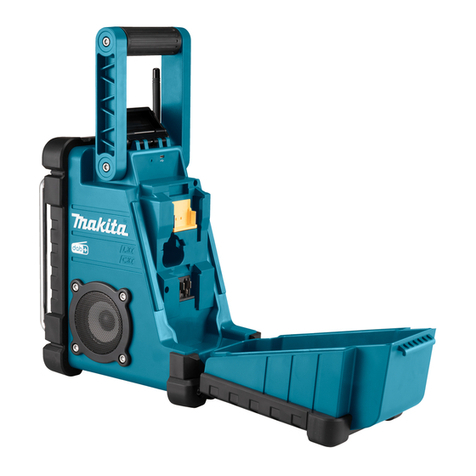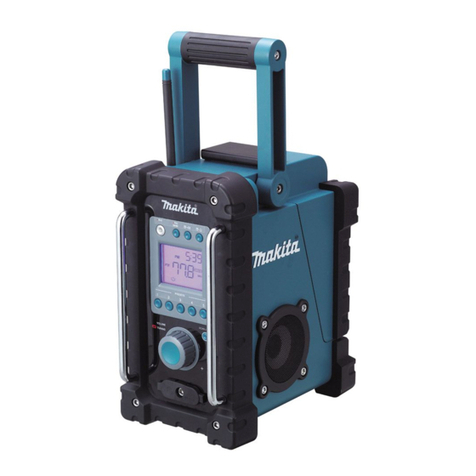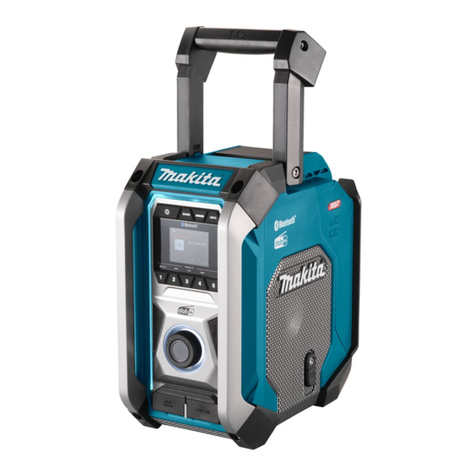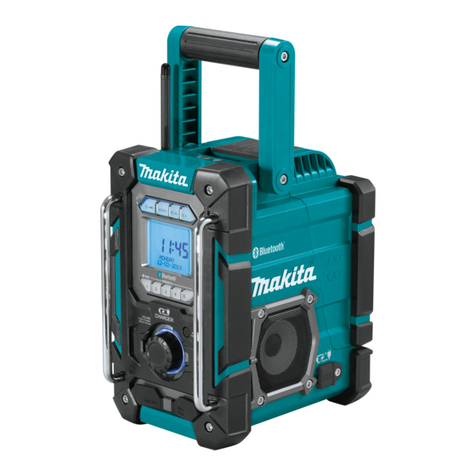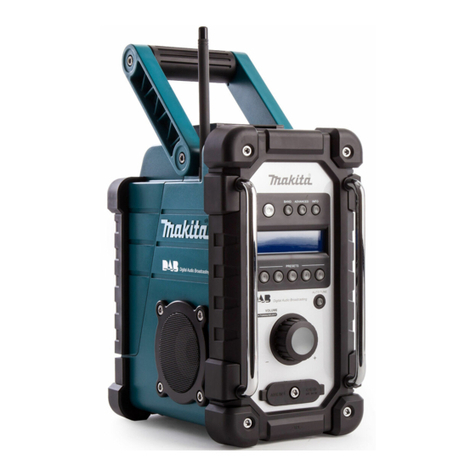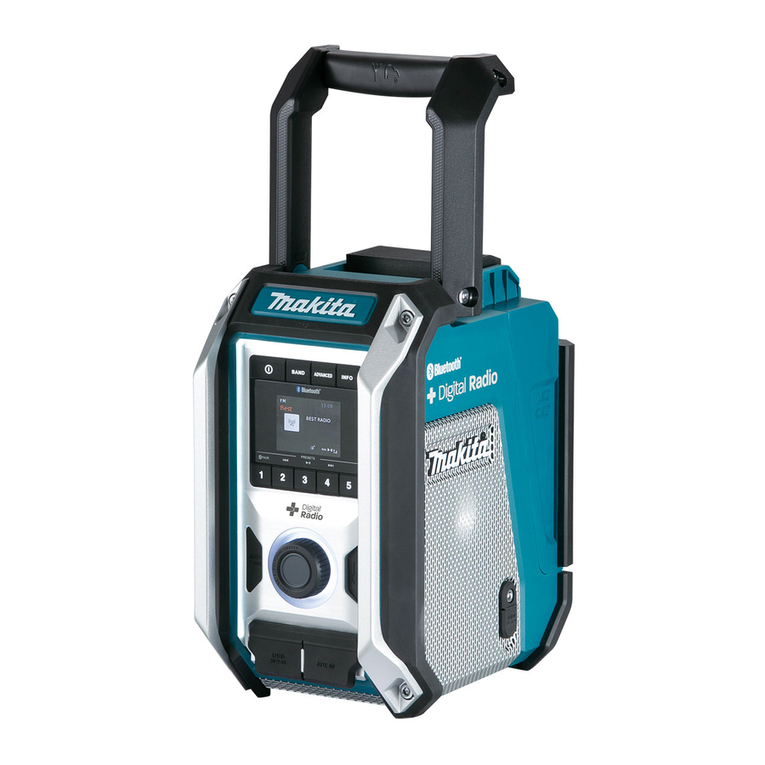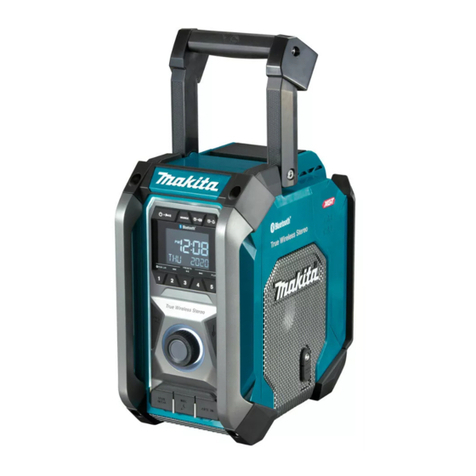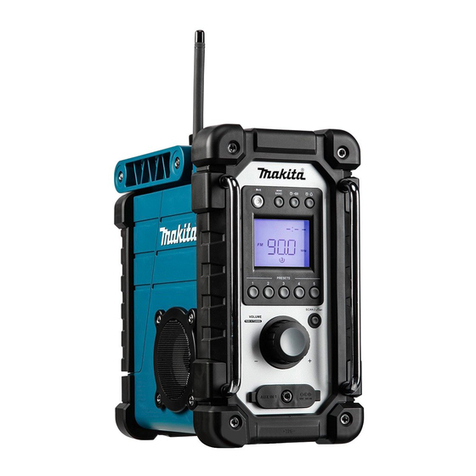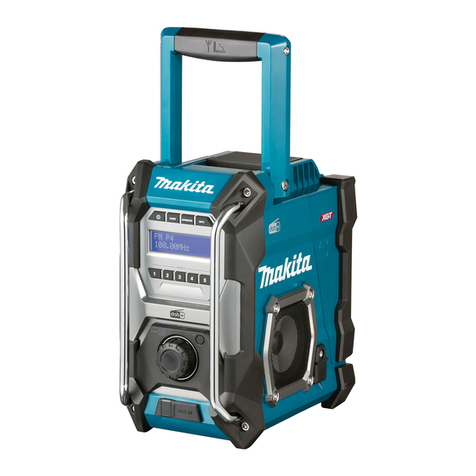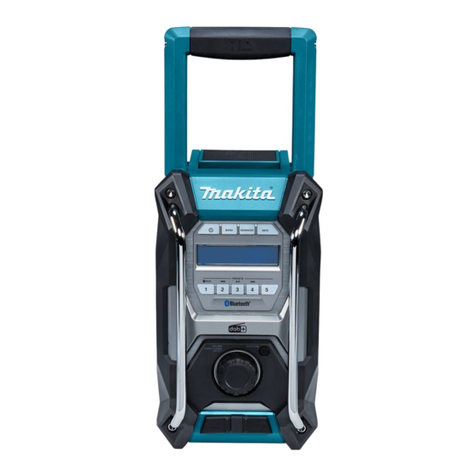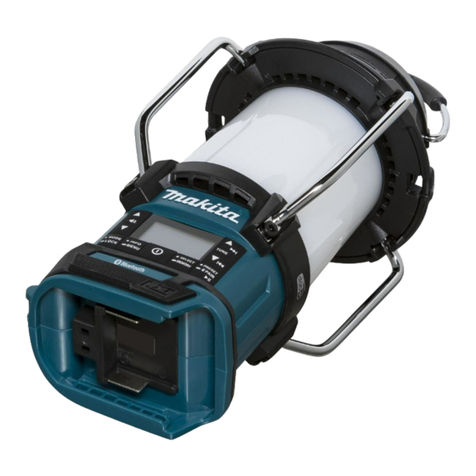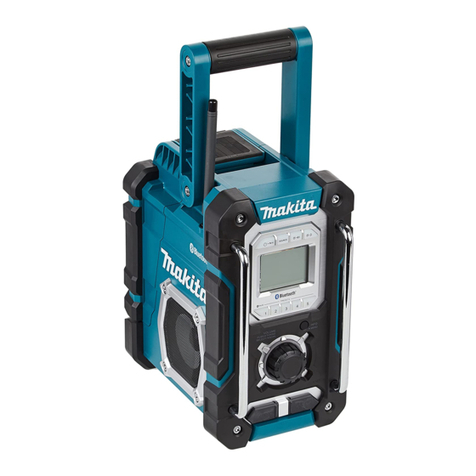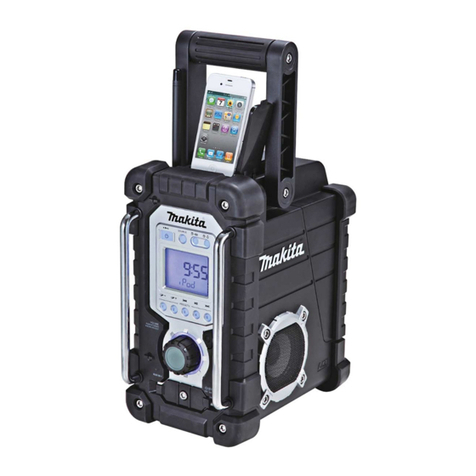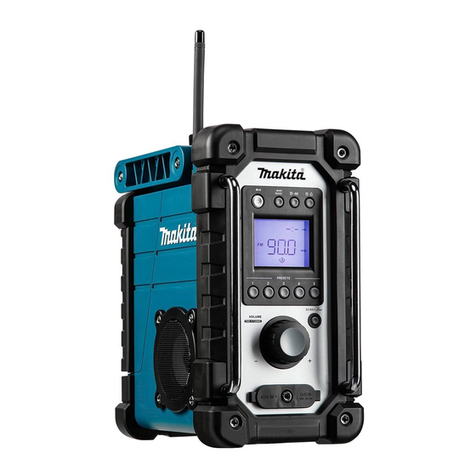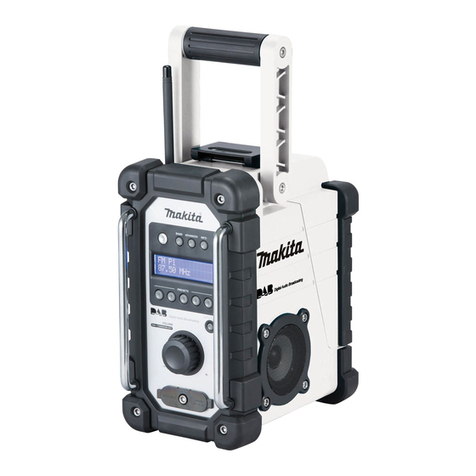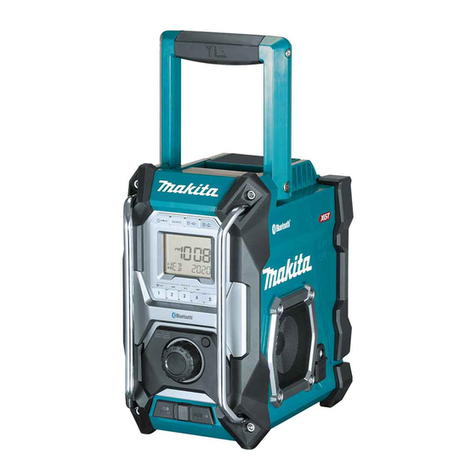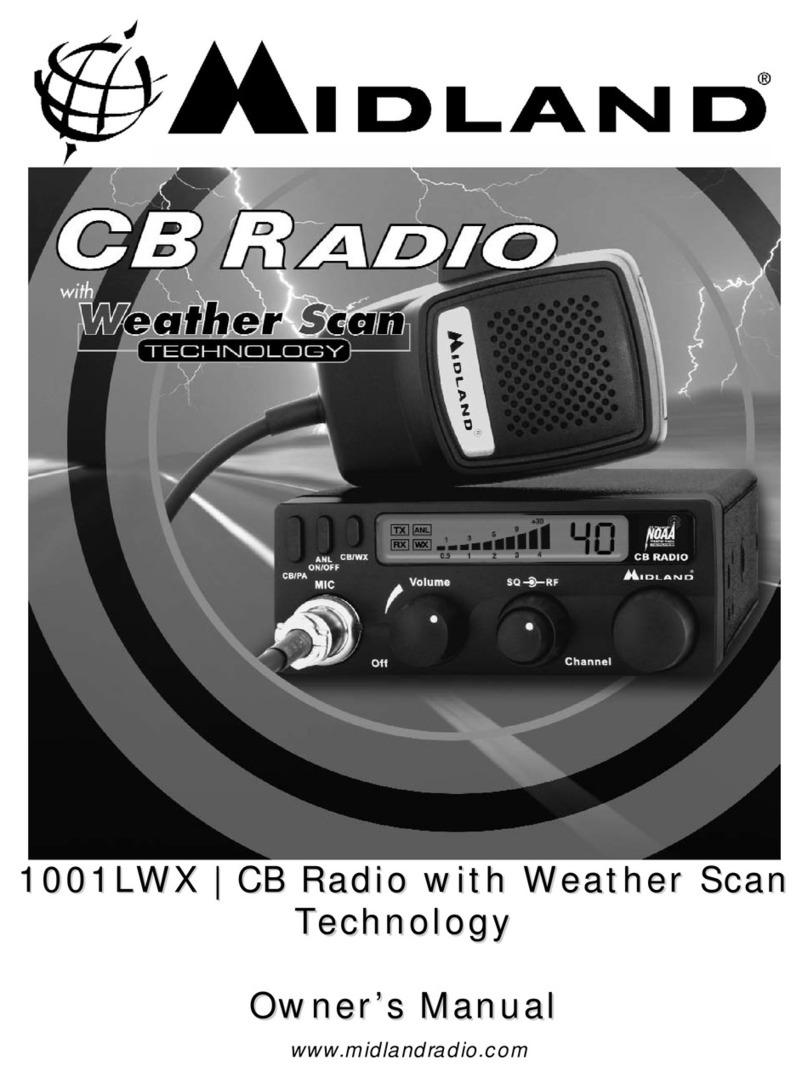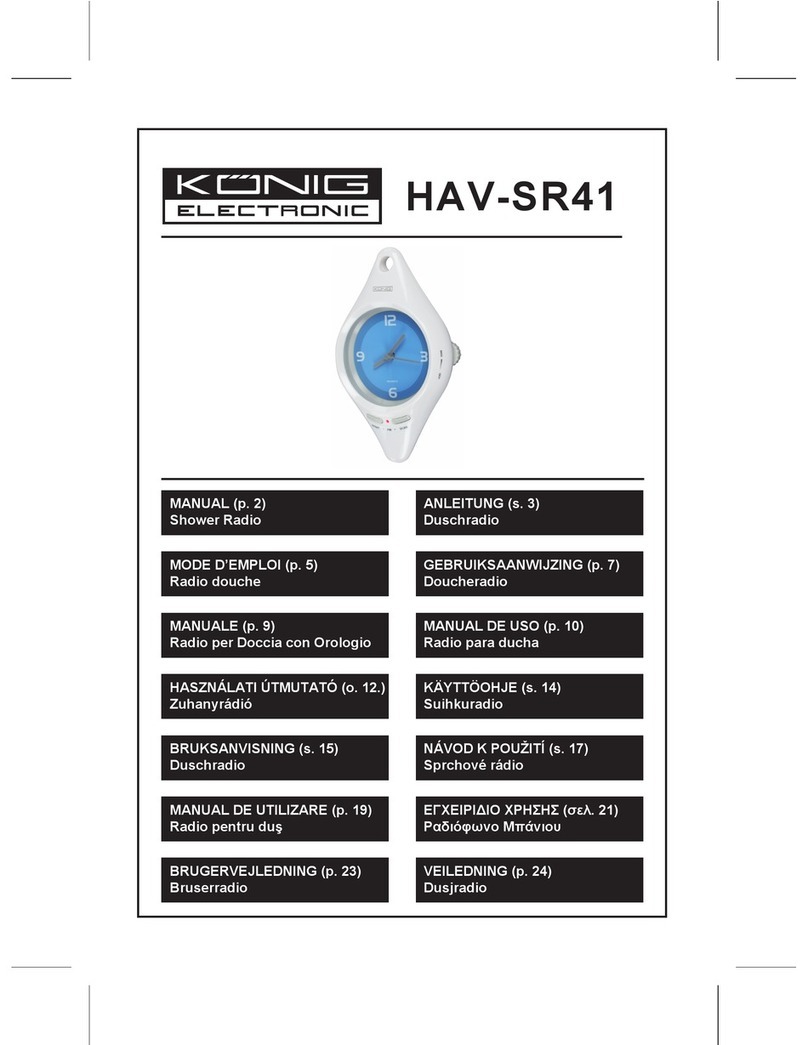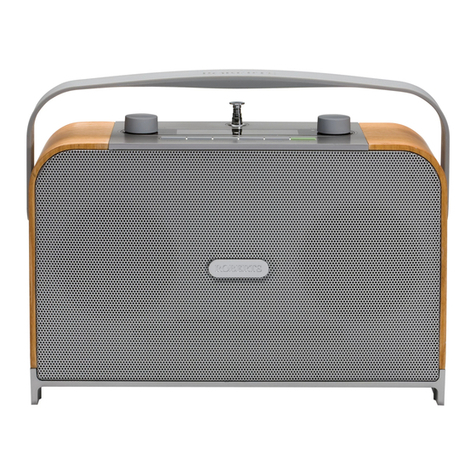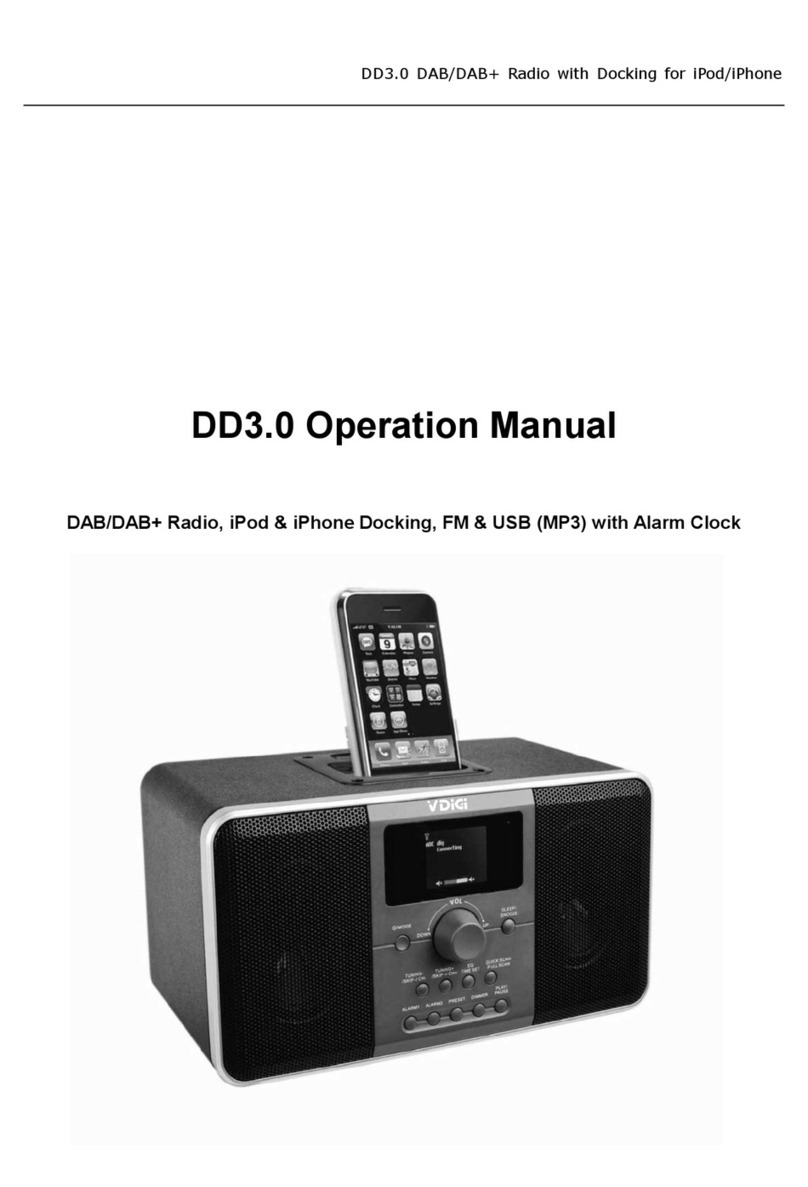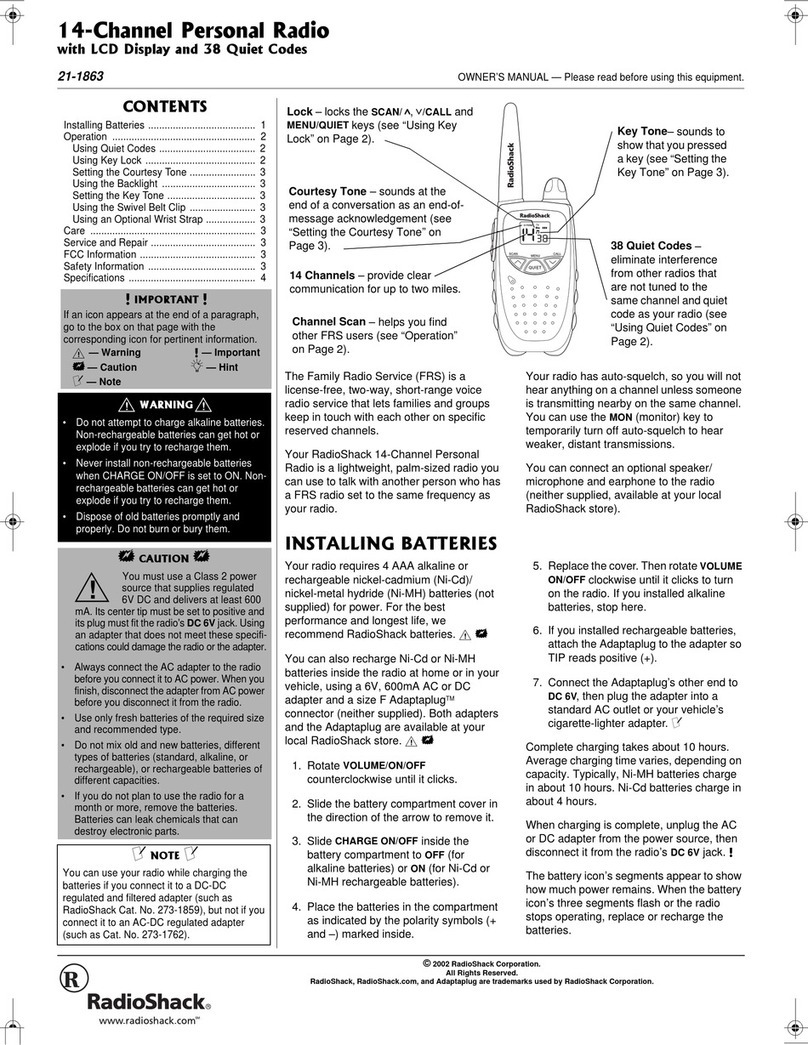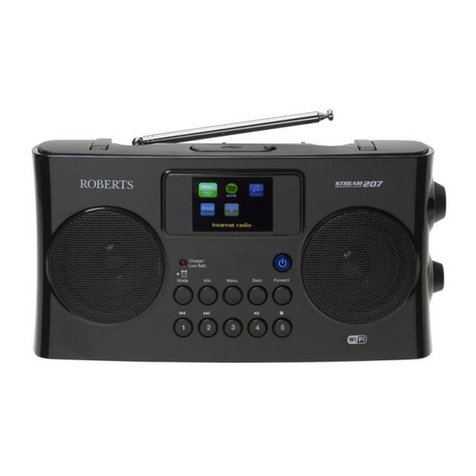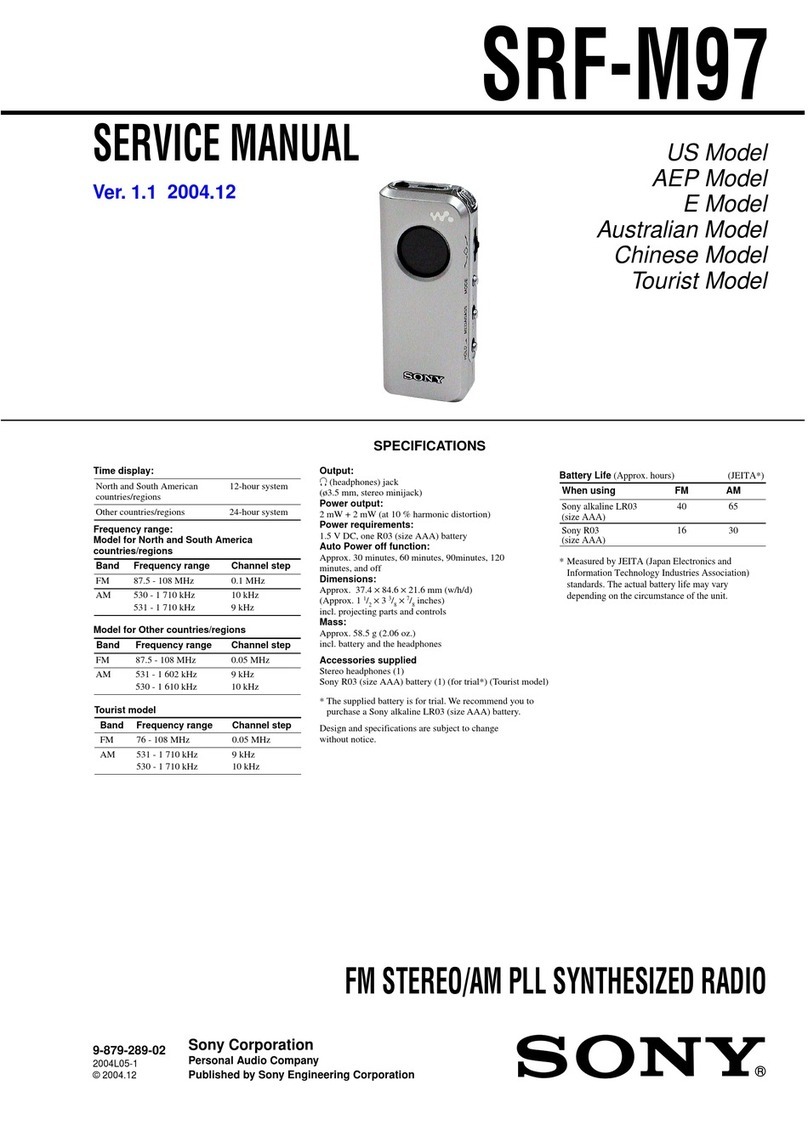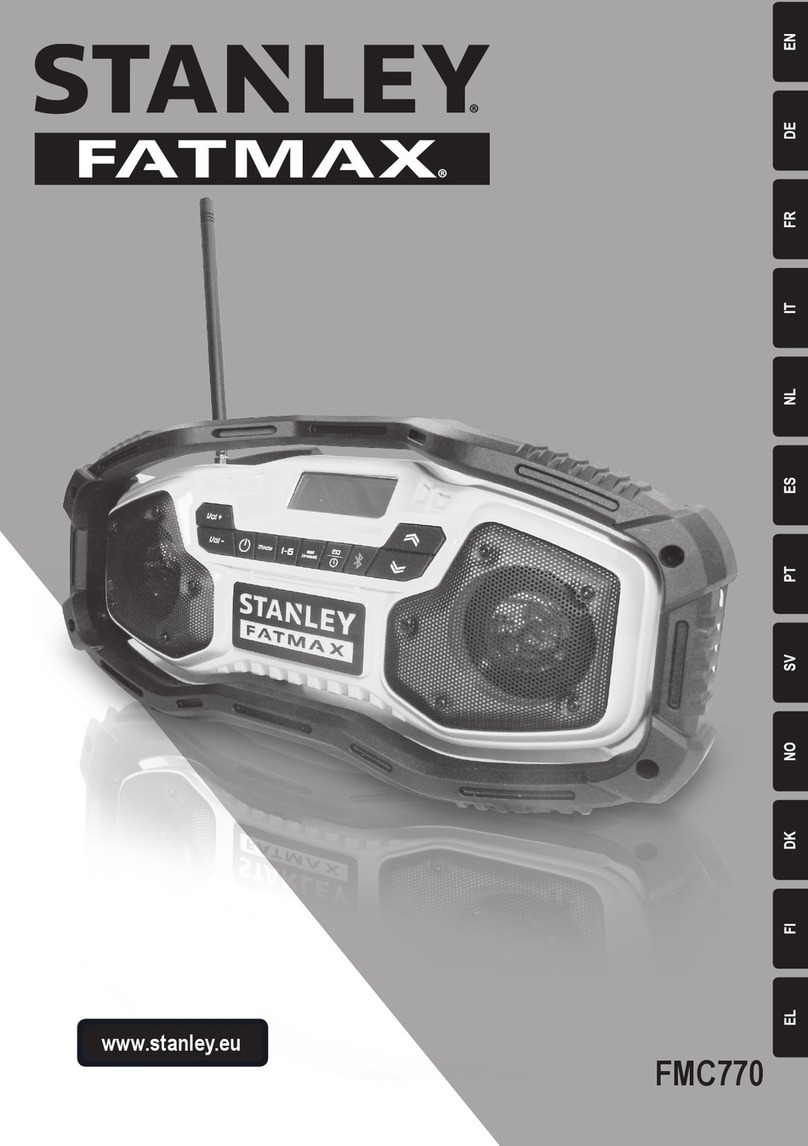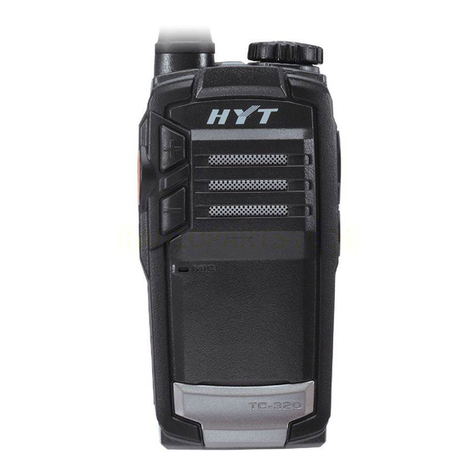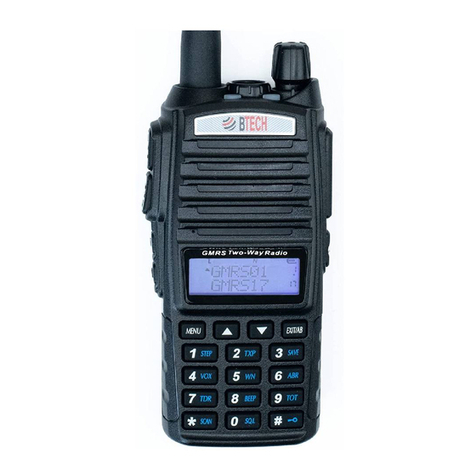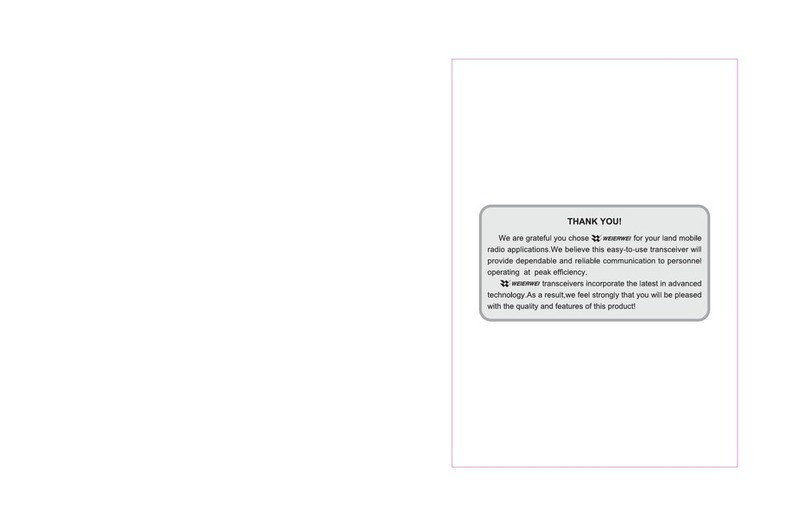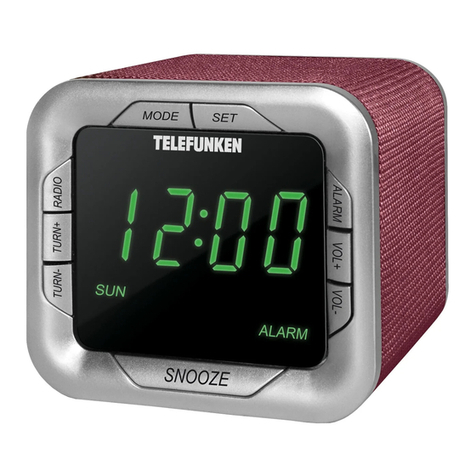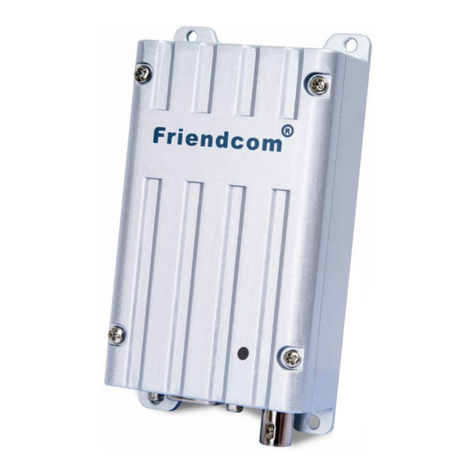10
FRANÇAIS (Instructions d’origine)
Symboles
Les symboles utilisés pour l’appareil sont indiqués ci-
dessous. Assurez-vous d’avoir bien compris leur
signification avant d’utiliser l’appareil.
CONSIGNES DE SÉCURITÉ
IMPORTANTES
AVERTISSEMENT :
Lors de l’utilisation des outils électriques, vous devez
toujours prendre des précautions élémentaires en matière
de sécurité pour réduire les risques d’incendie, de choc
électrique et de blessure. Ces précautions sont
notamment les suivantes :
1. Avant d’utiliser l’appareil, lisez attentivement son
manuel d’instructions et celui du chargeur.
2. Nettoyez avec un chiffon doux uniquement.
3. N’installez pas l’appareil près de sources de chaleur,
telles que des radiateurs, des bouches de chaleur,
des poêles ou d’autres dispositifs (notamment des
amplificateurs) émetteurs de chaleur.
4. Utilisez uniquement des pièces complémentaires/
accessoires spécifiés par le fabricant.
5. Débranchez cet appareil en cas d’orage ou lorsque
vous ne l’utilisez pas pendant une période prolongée.
6. Les batteries utilisées pour les radios, qu’elles soient
intégrées ou séparées, doivent être rechargées
uniquement à l’aide du chargeur de batterie spécifié.
Un chargeur qui convient à un type de batterie peut
créer un risque d’incendie s’il est utilisé avec une
autre batterie.
7. Les radios fonctionnant à l’aide de batteries doivent
être utilisées uniquement avec les batteries
désignées. L’utilisation d’autres batteries peut créer
un risque d’incendie.
8. Lorsque vous n’utilisez pas le bloc-batterie,
conservez-le à l’écart d’autres objets métalliques, tels
que : des trombones, pièces de monnaie, clés, clous,
vis ou autres petits objets métalliques susceptibles
d’établir une connexion d’une borne à l’autre. Court-
circuiter les bornes de la batterie peut provoquer des
étincelles, des brûlures ou un incendie.
9. Évitez tout contact corporel avec les surfaces mises à
la terre, telles que les tuyaux, radiateurs, cuisinières et
réfrigérateurs. Le risque de choc électrique augmente
si votre corps est mis à la terre.
10. En cas de mauvaise utilisation, du liquide peut fuir de
la batterie ; évitez tout contact. En cas de contact
accidentel, nettoyez la surface en question à l’eau. Si
le liquide entre en contact avec les yeux, consultez un
médecin. Le liquide émis par la batterie peut
provoquer une irritation ou des brûlures.
11. La fiche secteur est utilisée comme dispositif de
déconnexion et doit rester facilement accessible.
CONSERVEZ CES
INSTRUCTIONS
CONSIGNES DE SÉCURITÉ
IMPORTANTES
POUR LA BATTERIE
1. Avant d’utiliser la batterie, veuillez lire toutes les
instructions et tous les avertissements inscrits sur (1)
le chargeur, (2) la batterie et (3) l’appareil alimenté par
la batterie.
2. Ne démontez pas la batterie.
3. Cessez immédiatement d’utiliser l’appareil si le temps
de fonctionnement devient excessivement court. Il y a
risque de surchauffe, de brûlures, voire d’explosion.
4. Si l’électrolyte pénètre dans vos yeux, rincez-les à
l’eau claire et consultez immédiatement un médecin. Il
y a risque de perte de la vue.
5. Ne court-circuitez pas la batterie :
(1) Ne touchez les bornes avec aucun matériau
conducteur.
(2) Évitez de ranger la batterie dans un contenant où
se trouvent d’autres objets métalliques tels que
des clous, pièces de monnaie, etc.
(3) N’exposez pas la batterie à l’eau ou à la pluie. Un
court-circuit de la batterie risque de provoquer un
fort courant, une surchauffe, parfois des brûlures,
voire une panne.
6. Ne rangez pas l’outil ou la batterie dans des endroits
où la température risque d’atteindre ou de dépasser
50°C (122°F).
7. Ne jetez pas la batterie au feu même si elle est
sérieusement endommagée ou complètement
épuisée. La batterie peut exploser au contact du feu.
8. Veillez à ne pas laisser tomber ou heurter la batterie.
9. N’utilisez pas de batterie endommagée.
Caractéristiques :
• FM/DAB ou DAB+
• Grand écran LCD avec rétroéclairage
• Syntonisation manuelle/par balayage/présélection
• Syntonisation par rotation et commande de volume
• 5 stations présélectionnées pour chaque bande
• Port micro-USB pour mise à jour de logiciel
• Haut-parleur stéréo pour des performances audio
optimales
• Conception très robuste
• Étanche jusqu’à IPX 4
Référez-vous au manuel d’instructions.
Pour les pays européens uniquement
Ne pas jeter les appareils électriques et les
batteries dans les ordures ménagères !
Conformément à la directive européenne
2002/96/CE relative aux déchets
d’équipements électriques ou électroniques
(DEEE) et à la directive 2006/66/CE relative
aux batteries, aux accumulateurs ainsi qu’aux
batteries et accumulateurs usagés et à leur
transposition dans la législation nationale, les
appareils électriques et les batteries doivent
être collectés à part et être soumis à un
recyclage respectueux de l’environnement.

